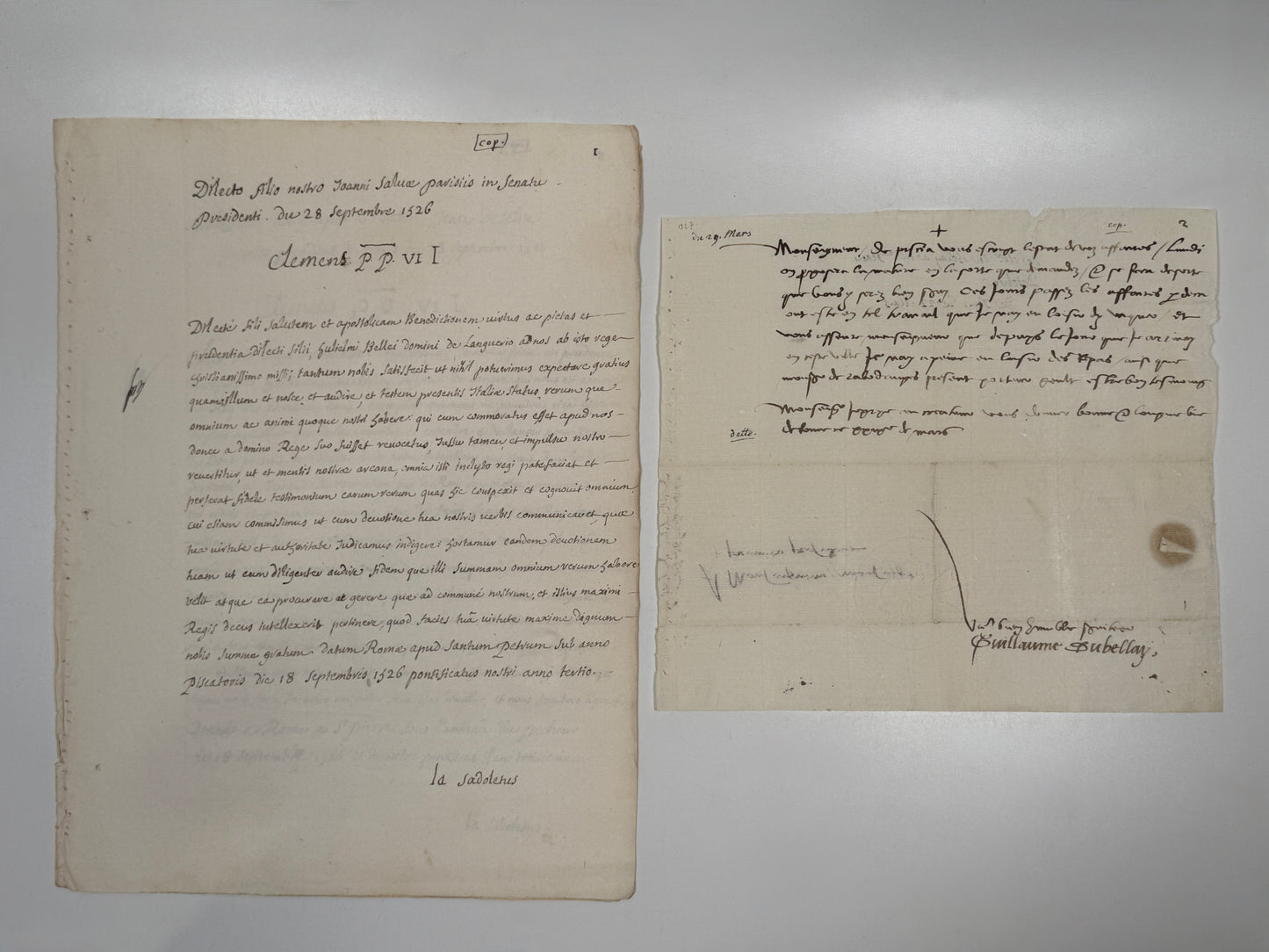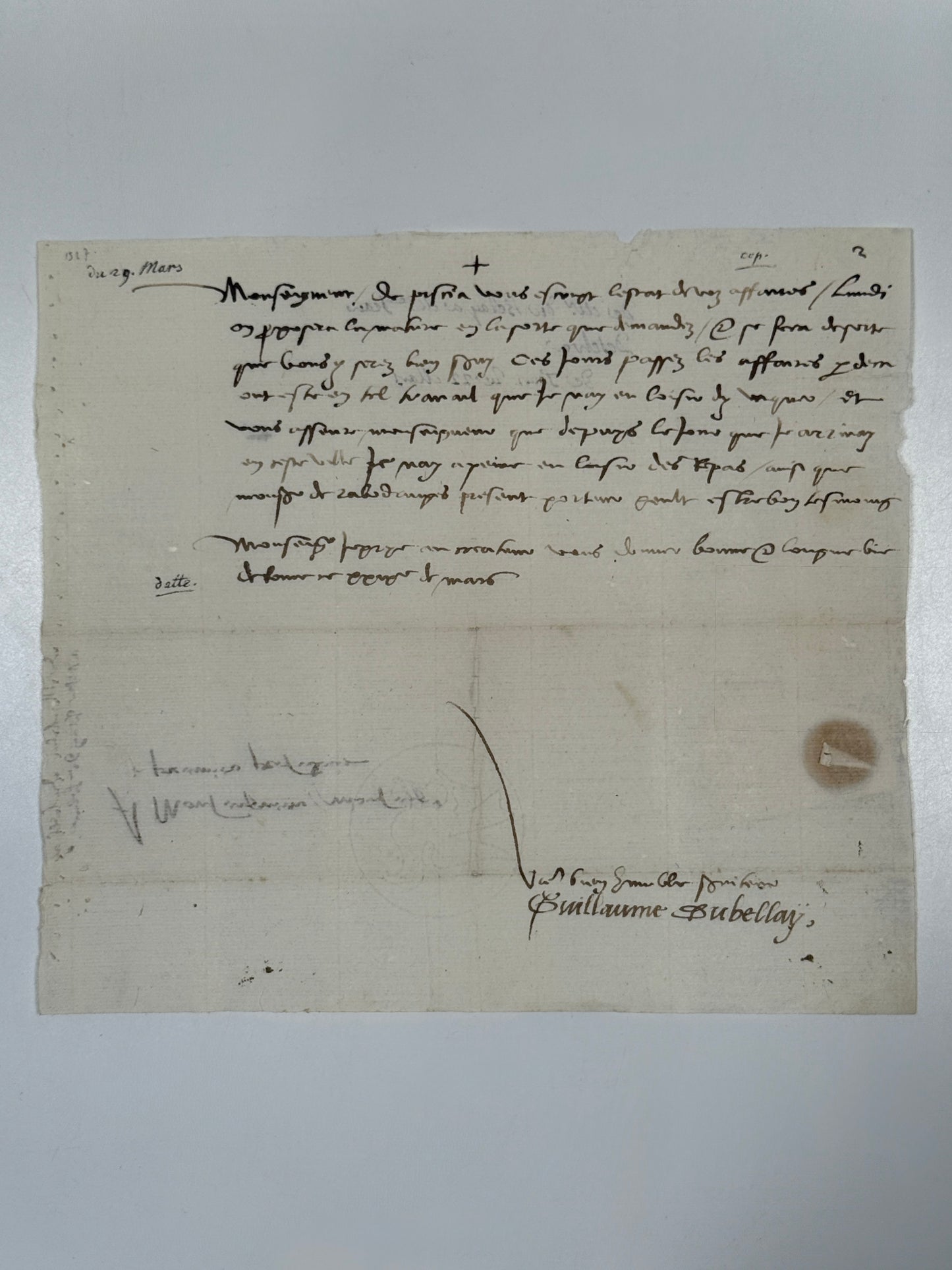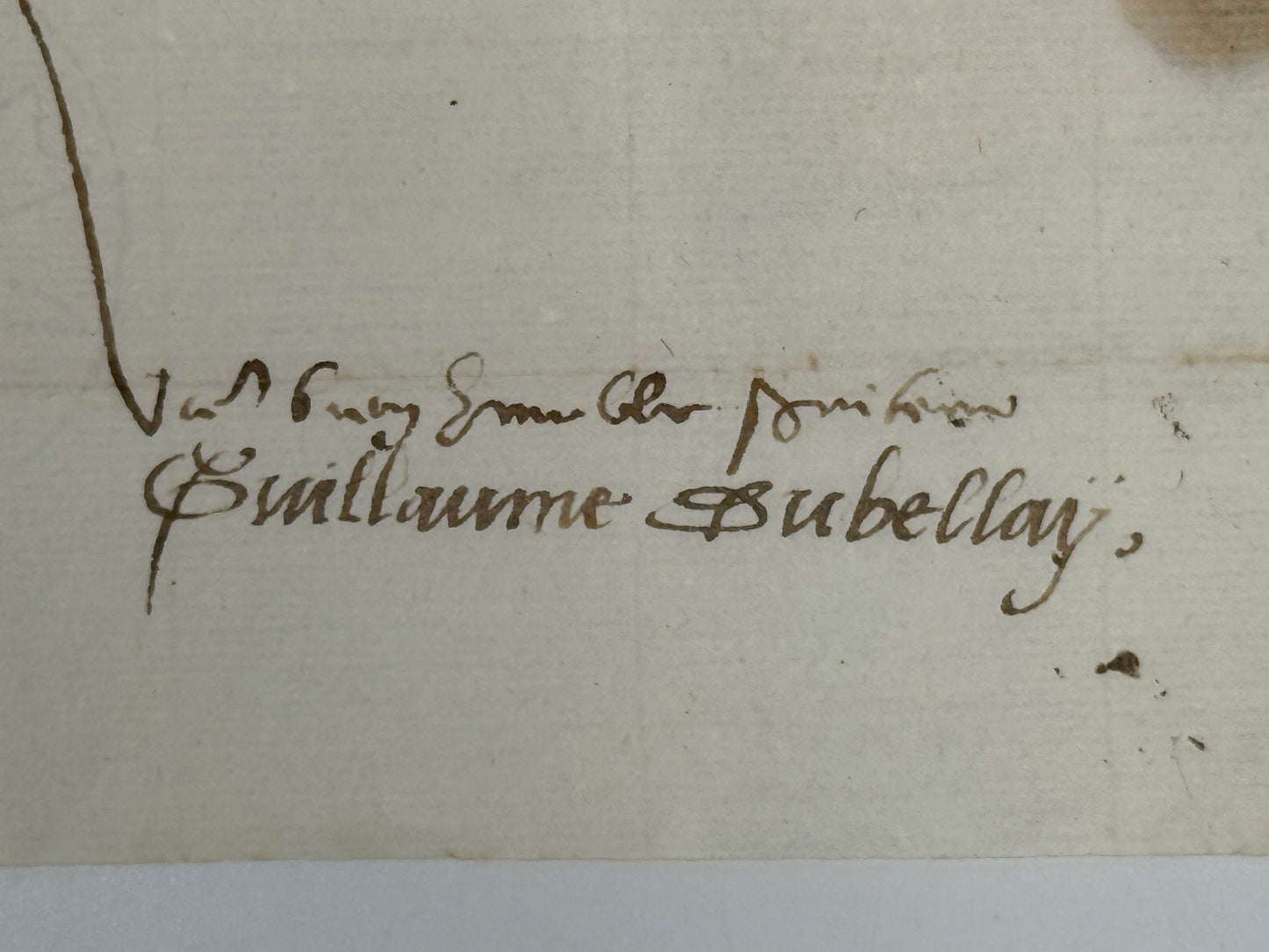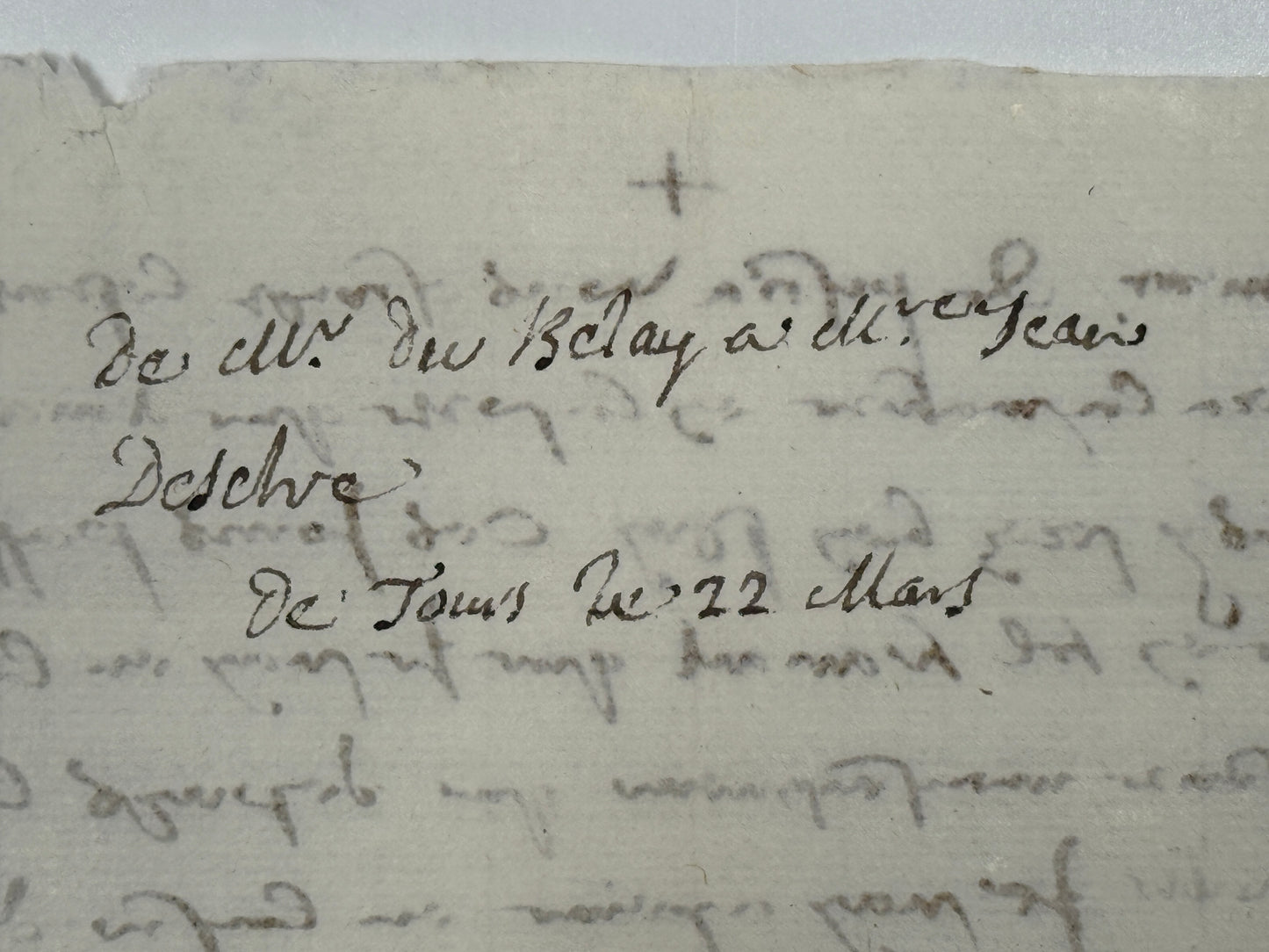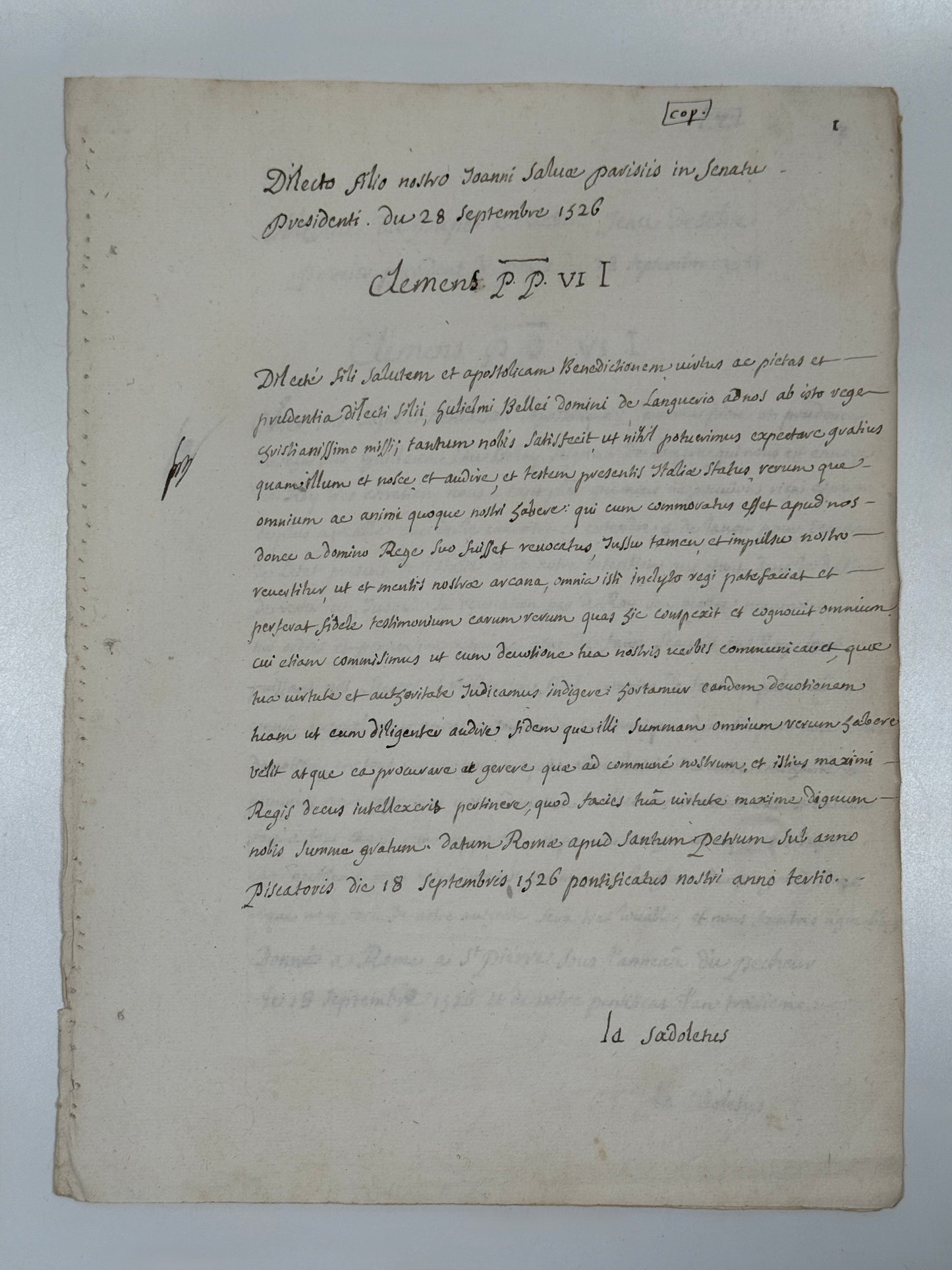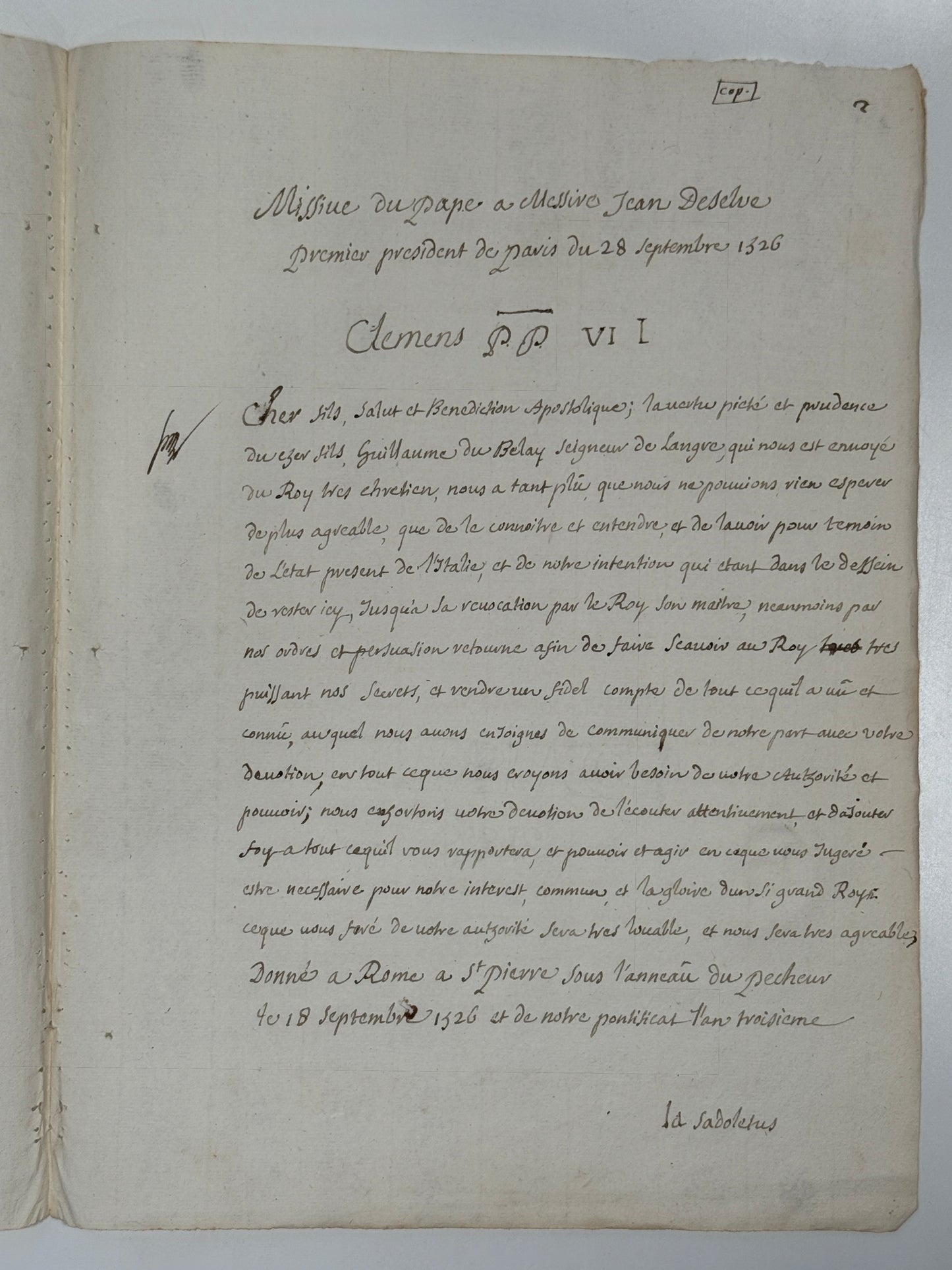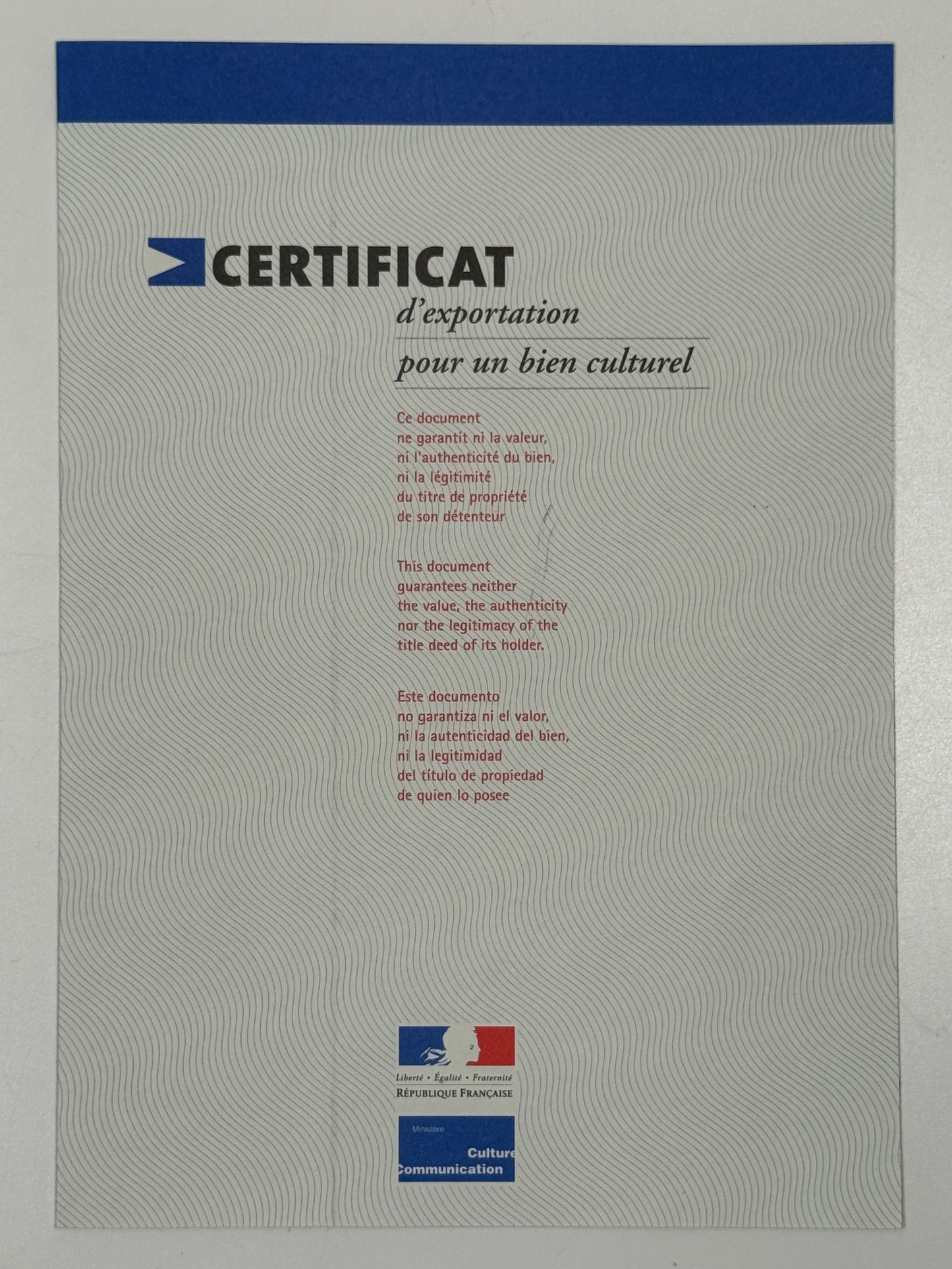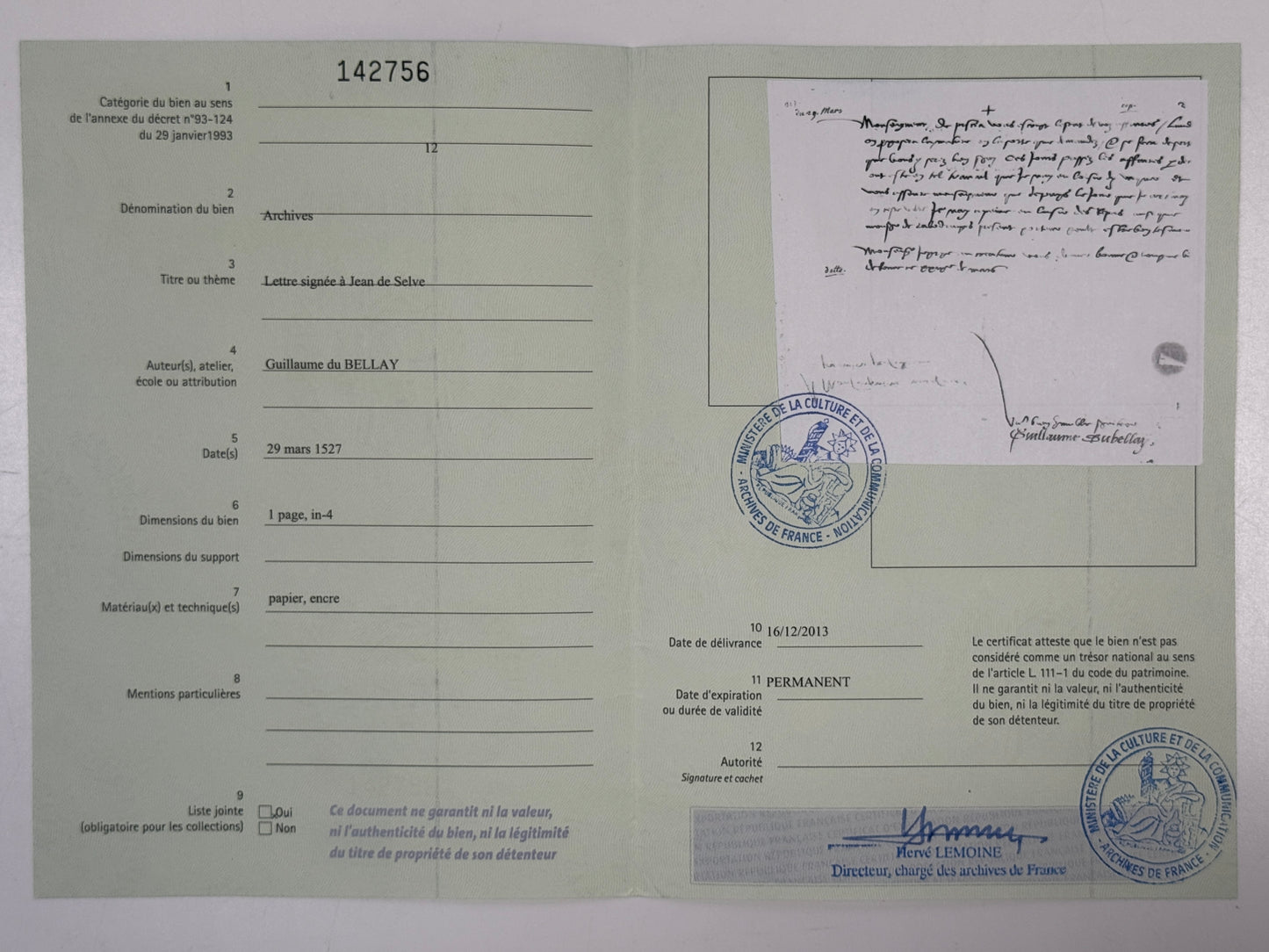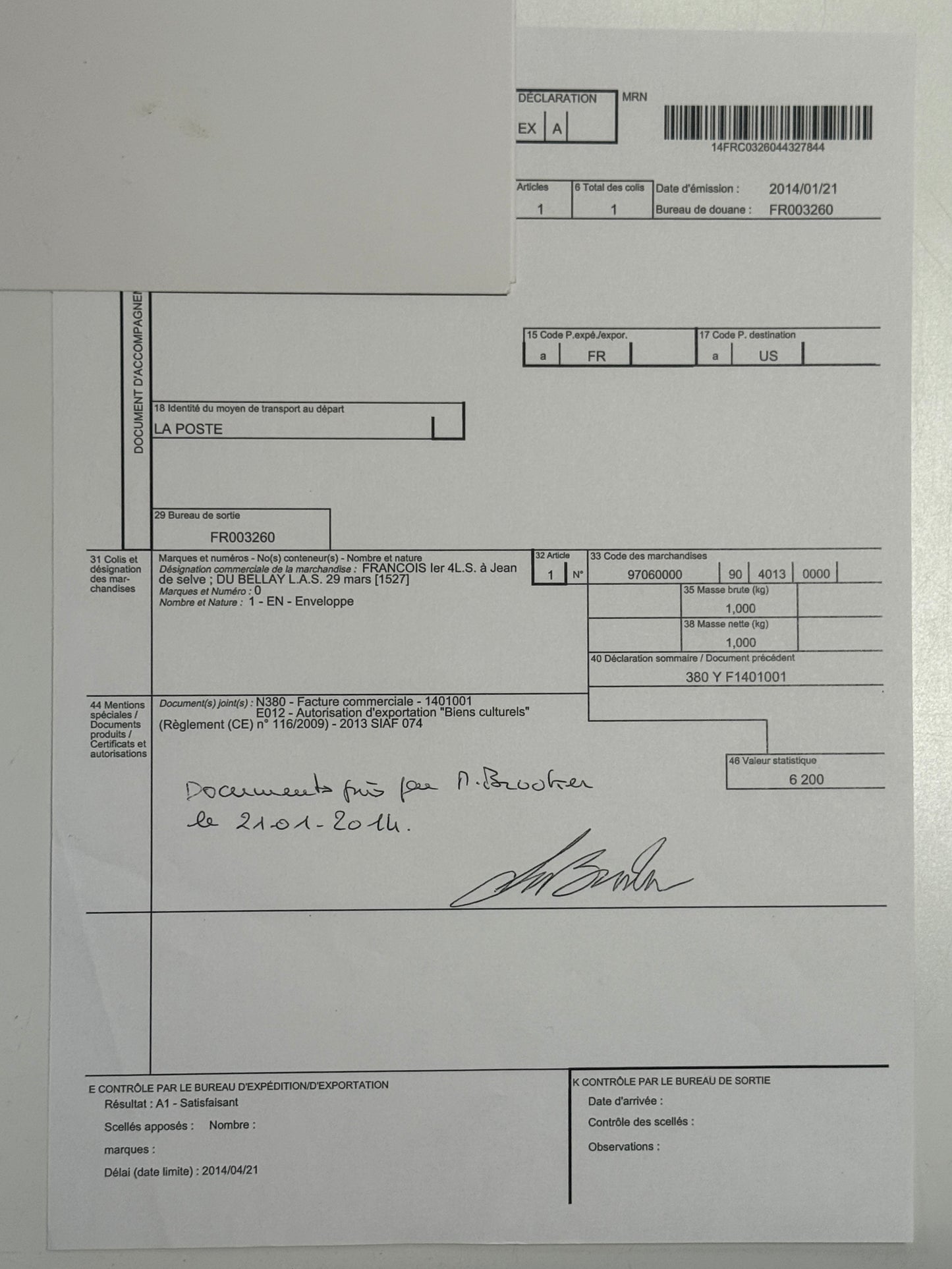A Primary Witness To The Negotiations Which Led To The Sack Of Rome In 1527
A Primary Witness To The Negotiations Which Led To The Sack Of Rome In 1527
Couldn't load pickup availability
A PRIMARY WITNESS TO THE NEGOTIATIONS WHICH DIRECTLY LED TO THE SACK OF ROME IN 1527.
“Lundi on proposera la matiere en la sorte que demandez... Ces jours passez les affaires pardeca ont esté en tel travail que je nay eu loisir dy vaquer, et vous asseure, monseigneur que depuys le jour que je arivay en ceste ville je nay apeine eu loisir des repas...”
-------------------
An important diplomatic letter from Guillaume du Bellay, reporting to Jean de Selve on the negotiations with Pope Clement VII which culminated in the League of Cognac, the fateful alliance that provoked the Sack of Rome in May 1527.
Guillaume du Bellay, (1491-1543), was among the most remarkable figures of Francis I’s reign: a soldier, humanist, historian, and, above all, his most skilful diplomat. Born into a distinguished Angevin family long in service to the French crown, Du Bellay entered the military young and was taken prisoner alongside Francis I at Pavia in 1525. His energy and loyalty thereafter made him indispensable to the king. His career was prodigiously active, with missions to Spain, Italy, England, and Germany. He helped secure the Sorbonne’s judgement in Henry VIII’s favour in 1530, united German princes against Charles V through the treaties of Scheyern (1532) and Augsburg (1534), and later governed Turin and all of Piedmont, where his administrative talent was widely praised. His patronage of Rabelais and his own historical writing, the Ogdoades, further attest to his stature as both man of action and man of letters. Charles V himself reputedly remarked that Du Bellay had “done more mischief and thwarted more schemes than all the French together.”
His correspondent, Jean de Selve (1475-1529), president of the Parlement de Paris, was no less central to the high politics of the time. After the French conquest of Milan in 1515 he served in senior office there, and in 1526 he helped negotiate the Treaty of Madrid, concluded after the catastrophe at Pavia.
Dispatched to Rome in 1527, Du Bellay was charged with securing papal support against Charles V. In this letter he assures De Selve that the matter will be presented “in the way you requested” on Monday, though he laments that the pressure of events has scarcely allowed him time to eat. Within weeks the alliance was concluded in the League of Cognac; within two months it brought disaster, as imperial troops, victorious but unpaid and undisciplined, descended upon Rome in one of the most brutal sacks the city had ever endured.
Although this letter predates the Schmalkaldic League by nearly a decade, it belongs firmly to the same wider narrative: the escalating struggle between Francis I and Charles V that shaped the political and religious landscape of early modern Europe. Du Bellay’s failed diplomacy with Clement VII left the Habsburg emperor unchecked in Italy, strengthening his hold over the papacy and giving him the freedom later to confront Protestant princes in Germany. The collapse of French and papal resistance in 1527 thus paved the way for Charles V’s ascendancy, culminating in his triumph at Mühlberg in 1547. In this sense, Du Bellay’s negotiations in Rome stand as a critical but doomed attempt to alter the balance of power at the dawn of the Reformation–Counter-Reformation era.
A rich and atmospheric document, written in Rome on the eve of catastrophe, this letter vividly conveys both the urgency of the diplomatic moment and the personal strain on one of Francis I’s most trusted envoys. It would make a significant addition to any collection devoted to the history of Europe, and especially to the Reformation and Counter-Reformation.
-------------------
Provenance:
Thierry de Maigret & Thierry Bodin, Lettres et manuscrits autographes: archives historiques Jean de Selve [lots 1–156], Paris, 13 May 2013, lot 132.
Later acquired by the Bibliotheca Brookeriana in early 2014 from Les Autographes, Paris (with a declared export value of €6,200 which was presumably the sale price). Complete with the original export forms from 2014 including the approved export license from the French Ministry of Culture.
-------------------
Size: 213 x 190 mm (approx.) - main letter
Size: 216 x 290 mm (approx.) - copy letter
